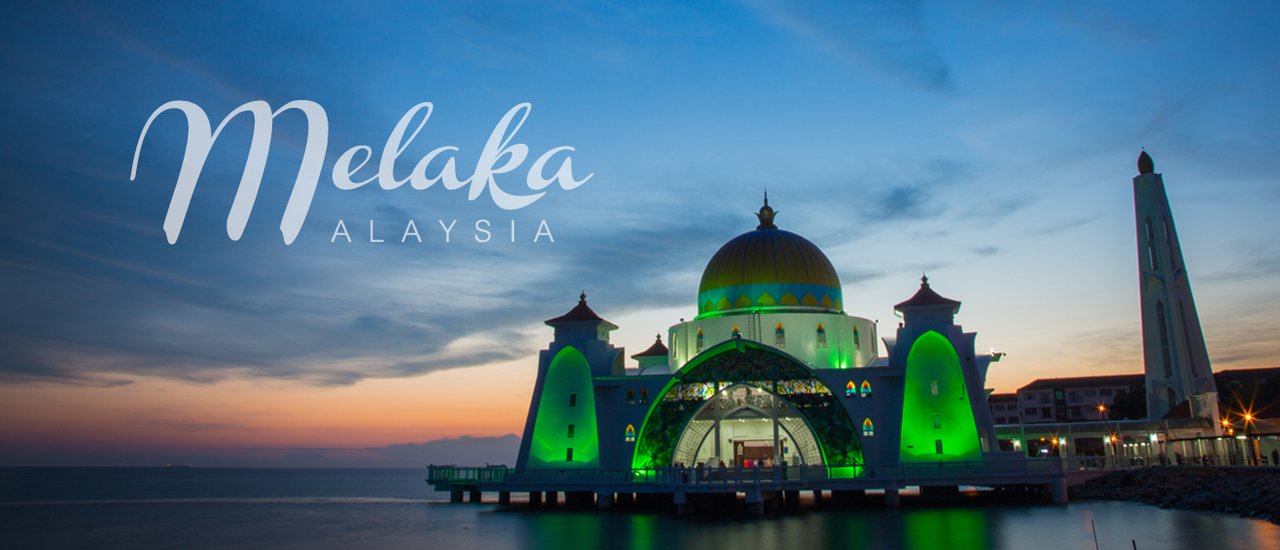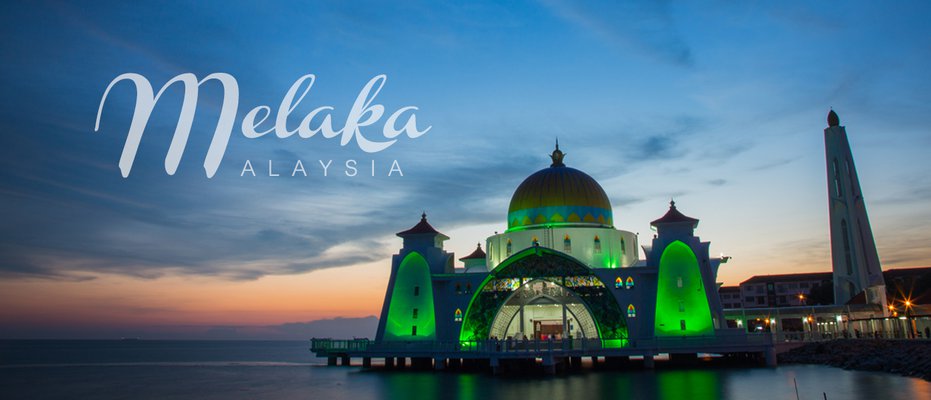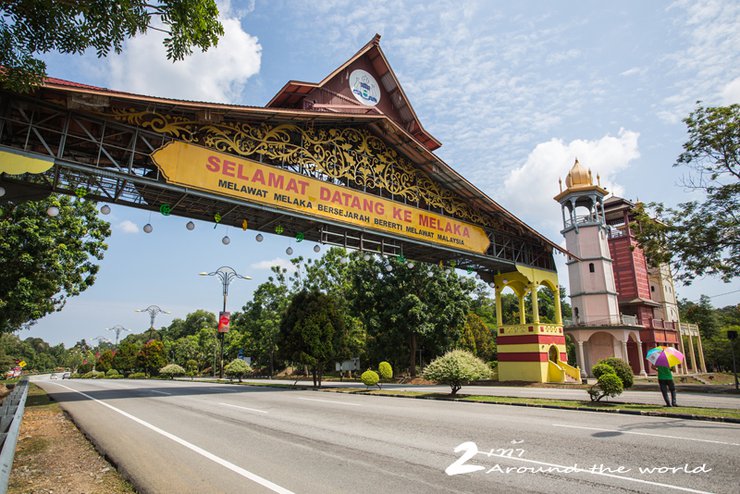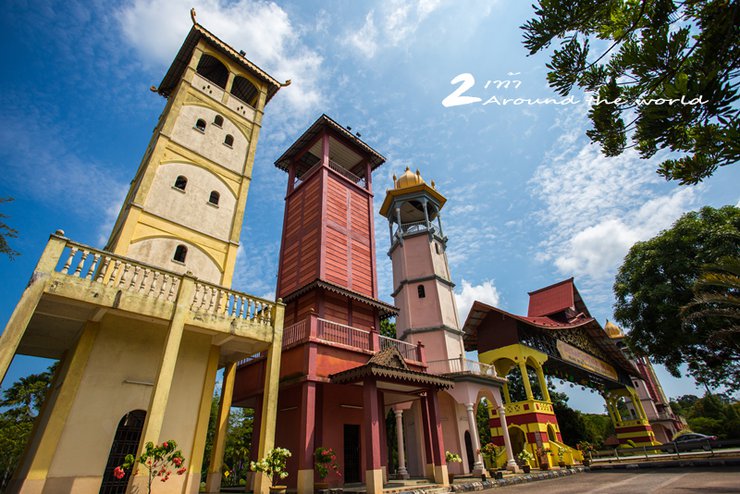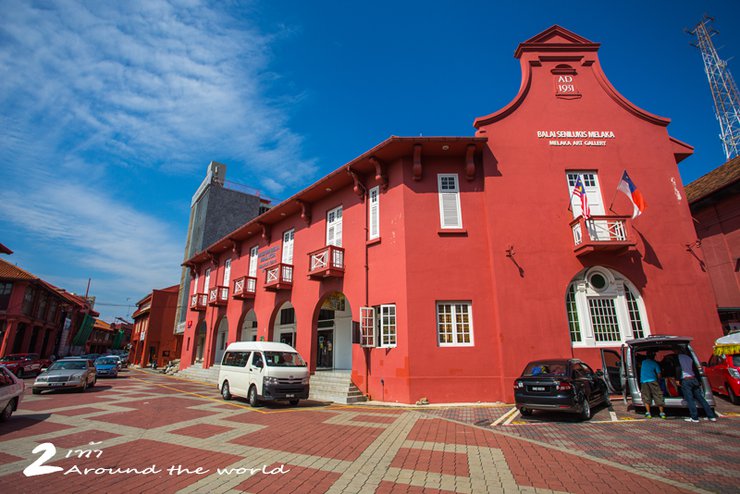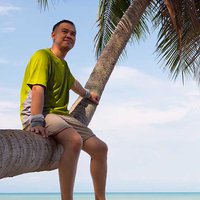
Melaka: A Historical Hub in Malaysia
Melaka, the capital of the state of the same name, is one of the 13 states of Malaysia. Situated on the southern tip of the Malay Peninsula, it stands as one of the four states without a royal ruler, instead governed by a Chief Minister.
Historically, Melaka served as a pivotal trading center between the East and West, strategically positioned on the Strait of Malacca. Its proximity to Kuala Lumpur, approximately 90 kilometers away, further enhances its significance.


The entrance gate to the city of Malacca has three towers, representing the three ethnicities that reside in Malacca: Chinese, Hindu, and Islamic.
Let's begin with the origin of the name "Malakaga".

The founding of Malacca began at this location. Prince Parameswara, also known as Prince Paramesvara, fled Palembang, Indonesia, after losing a war. He first arrived in Temasek, present-day Singapore. However, Temasek was under Siamese control, leading to conflict. Seeking revenge for his defeat, the Prince gathered his forces and decided to fight again. His inspiration came while sitting at this spot, witnessing a mouse deer being attacked by a fox on the banks of the Malacca River. Despite its small size and lack of antlers, the mouse deer outsmarted the fox and pushed it into the river using its head. This inspired the Prince to fight for his independence, and he emerged victorious. Returning to this spot, he desired to establish his own territory. Unable to decide on a name, a fruit fell beside him. It was a Malacca fruit, and he decided to name his newly liberated city "Malacca." Interestingly, the Malacca fruit is the same as the Indian gooseberry found in our country.
Parameswara, the first sultan of Malacca and Malaysia, was forced to abandon the city after invasions by the British, Portuguese, Dutch, and Japanese. With his departure, the sultanate system in Malacca came to an end.


**"Dutch Square"**, also known as the Red Square, is a significant historical landmark in Malacca. It was once the center of the Dutch community during their rule over Malaya. Each ruling power in Malacca's history is believed to have erected symbols of their respective nations within the city.

"Christ Church Melaka" is a prominent red Protestant church situated in the heart of Red Square. It has become an iconic landmark of Melaka, attracting numerous tourists who capture its beauty in photographs. This church was constructed to commemorate the 100th anniversary of Dutch rule in Melaka. Its construction spanned 12 years. However, when the British took over, the church was converted to Anglicanism, and a weather vane in the shape of a rooster was installed above the bell on the church's spire. A multitude of souvenir shops are located nearby.


One of the unique features of Malacca is its trishaws. When I first visited Malacca, most trishaws were yellow and adorned with flowers. However, trishaws today have undergone a significant transformation. They come in a variety of colors, including yellow, blue, and pink, and each one is adorned with a unique collection of dolls, such as Kitty, Olaf, Pikachu, Minions, and many others. The atmosphere is reminiscent of Disneyland.

Between the Christian church and the clock tower stands a Victorian marble fountain, symbolizing England. It was built in 1904 to commemorate the 65th anniversary of Queen Victoria's reign.

Across the street from the Christian church stands a windmill, a symbol of Holland.

"Church of St. Francis Xavier" is an ancient Gothic-style church built by Bishop Farve as a dedication to Saint Francis Xavier. Across from it are the remains of the foundation of the Red Building, which was the starting point for its construction. However, due to various wars, only the foundation remains.

From Dutch Square, I ascended to St. Paul's Hill, a modest elevation adjacent to Christ Church Melaka.


Atop St. Paul's Hill stands "St. Paul's Church". During the Portuguese rule of Malacca, the church was known as Nosa Senhora. However, the name was changed to St. Paul when the Dutch took over.
Legend has it that centuries ago, the body of St. Francis Xavier, who had passed away nearly a year prior, was exhumed in Malacca for transport to Goa, India. Upon exhumation, the saint's body appeared as if he were merely asleep. A request for sainthood was submitted to the Vatican, but a response was not received for 16 years. The Vatican then requested the amputation of St. Francis' arm as proof. Upon amputation, blood flowed as if he were still alive. Consequently, he was declared Saint Francis Xavier. Sixty years later, Malacca erected a white marble statue of the saint in front of St. Paul's Church. One day, lightning struck, causing a large branch to break off and sever the right arm of the statue. Coincidentally, the arm that was amputated and sent to the Vatican was also the right arm.



The church currently stands with only four walls remaining, its roof structure absent due to a major fire in 1934. My guide explained that the stone slabs placed around the interior walls were originally attached to the walls but later became detached, possibly as a result of the fire. These slabs have since been placed against the walls.
Inside the church, musicians play acoustic guitars and sing old songs, creating a truly atmospheric experience as you explore the historic building.

The guide explained that this is the altar, and there is a shelter dug beneath it.

The exterior of St. Paul's Church also offers panoramic views of Malacca City, including the Strait of Malacca. This strait, which I have known by name since my time studying at the National Institute of Development Administration (NIDA), is a crucial waterway separating the Malay Peninsula from the Indonesian island of Sumatra. At its narrowest point, it measures only 1.5 miles wide, making it a significant strategic location for maritime trade in Southeast Asia. Additionally, the Taming Sari Tower, a 110-meter-tall structure, provides 360-degree views of Malacca. This unique tower rotates on its axis and moves vertically, resembling an elevator in its operation.

From another angle, you can see the Maritime Museum, housed in a large replica of a cargo ship.


Descending from the peak of St. Paul's Hill, one encounters the "Porta De Santiago", a Portuguese-built gatehouse. This remaining fragment of the A Famosa Fort stands as a testament to the tumultuous history of Malacca. Originally constructed by the Portuguese, the fort was partially destroyed during the Portuguese-Dutch struggle for control of the city. Following the Dutch conquest, the A Famosa Fort was rebuilt, only to be demolished once more by the British navy. The solitary Porta De Santiago serves as a poignant reminder of this once formidable fortification.

Across from the Santiago Gate Fort stands the "Declaration of Independence Memorial Building", constructed during the British administration of Malacca. The building exhibits Victorian architectural style with Islamic influences, as seen in its golden twin domes. It serves as a museum showcasing the historical events during the Western colonial period.
I then took a stroll along the Melaka River Walk.

The "Melaka River Walk" is located adjacent to Red Square. Just across the street is the Melaka River, which serves as the main transportation route for the locals.

Along certain stretches of the River Walk, there are small cafes dotted throughout. In the evenings, the atmosphere must be truly delightful.

Boat tours are available to explore the city.

While Melaka River Walk boasts impressive street art, with captivating murals adorning buildings, it arguably falls short of the vibrant street art scene in Phuket, Thailand.

I walked back to the “Maritime Museum”, which is a replica of the Portuguese ship Flor de la Mar. During the Portuguese rule of Malacca, this ship was laden with treasures from the Sultan of Malacca's palace. After leaving Malacca, the ship sailed towards northern Sumatra, where it sank.
Before heading out to capture the sunset, we decided to grab a bite to eat at "Seri Nyonya Restaurant."


The cuisine here is a fusion of Chinese and Malay, known locally as "Baba Nyonya." The flavors are quite good, with some dishes resembling those found in Thailand, such as stir-fried morning glory and stir-fried cabbage. Other dishes are similar to Thai cuisine, such as the stir-fried petai with anchovies and the pineapple curry with shrimp. One dish is particularly reminiscent of Thai steamed fish in banana leaves.

The meal concluded with a dessert of cendol with palm sugar. The cendol itself was not as soft as we are accustomed to at home. The coconut milk, in my opinion, had a burnt sugar flavor and lacked the fragrance of coconut milk found in our country.
After dinner, I headed straight to the mosque by the river. I remember being impressed by this mosque during my previous visit to Malacca because of its location by the sea. This spot is likely to be another beautiful place to watch the sunset in Malacca.

“Melaka Straits Mosque” This mosque was built on Pulay Island, an artificial island created by the government to provide accommodation and establish new tourist attractions. The mosque remains unchanged from its construction to the present day, but the number of visitors has increased. When I first visited this place, there were no tourists at all. However, today, many tourists come here to watch the sunset.
Unfortunately, I arrived a little late and the villagers were about to perform their prayer rituals. As a result, I was unable to enter the mosque and could only admire its exterior.




The sun gradually set below the horizon. The sky was relatively clear today, and I secretly thought that I would definitely see an explosion of colors. However, it was only as I saw it. In any case, I was able to successfully complete my mission of capturing the evening light here today.
The mosque is located quite far from the community center, and as far as I can tell, there are no buses that pass by. If you want to visit this mosque, you will probably need to hire a taxi to get there.
My Malacca program doesn't end here. Guide Cake took me for a walk at Jonker Street, which is not far from Red Square.


"Jonker Street Night Market" is a pedestrian street market open only on Saturdays and Sundays. It is a must-visit destination for food and souvenirs, especially if you happen to be in Melaka during its opening days. The street is lined with old houses featuring Sino-Portuguese architecture, reminiscent of Phuket in Thailand. I found some great souvenirs here to bring back for my friends in Thailand. If you're looking for souvenirs, I highly recommend checking out Jonker Street. Prices are generally lower than those found at major tourist attractions, and you can even bargain a bit.
Pedicabs are a vibrant part of the cityscape of Mae La during the evening hours. While they are already a dazzling sight during the day, they become even more spectacular at night. Each pedicab is adorned with an array of dazzling lights, creating a captivating spectacle that is sure to leave onlookers in awe.
For accommodation in Malacca, I recommend "Eco Hotel Melaka".


Eco Hotel Melaka is not located in the heart of Malacca, but it is not far away. There is a 7-Eleven next to the hotel. The lobby is not very grand, but there is enough space for guests to sit while waiting to check in or check out. There is also a welcome drink.


The room is new, clean, and well-equipped with amenities, including free Wi-Fi.

The wardrobe will be located inside the bathroom. The wardrobe door is a large glass panel. The bathroom has a wet and dry separation with a glass cabinet. The shower in the room I stayed in did not have very strong water pressure, but the water pressure in the room of the member staying on the other side was very strong.

The rooftop boasts a swimming pool with stunning views of the Strait of Malacca.
Breakfast is available here, starting at 6:00 AM. I arrived just 5 minutes late, and the dining room was already packed with customers. As a result, I was unable to capture any photos of the dining room's ambiance for you.
Malacca's main tourist attractions include:
Finally, you can show your support and follow my work at https://www.facebook.com/unclegreenshirt.
This is a blank paragraph.
ลุงเสื้อเขียว
Tuesday, October 8, 2024 11:25 AM

